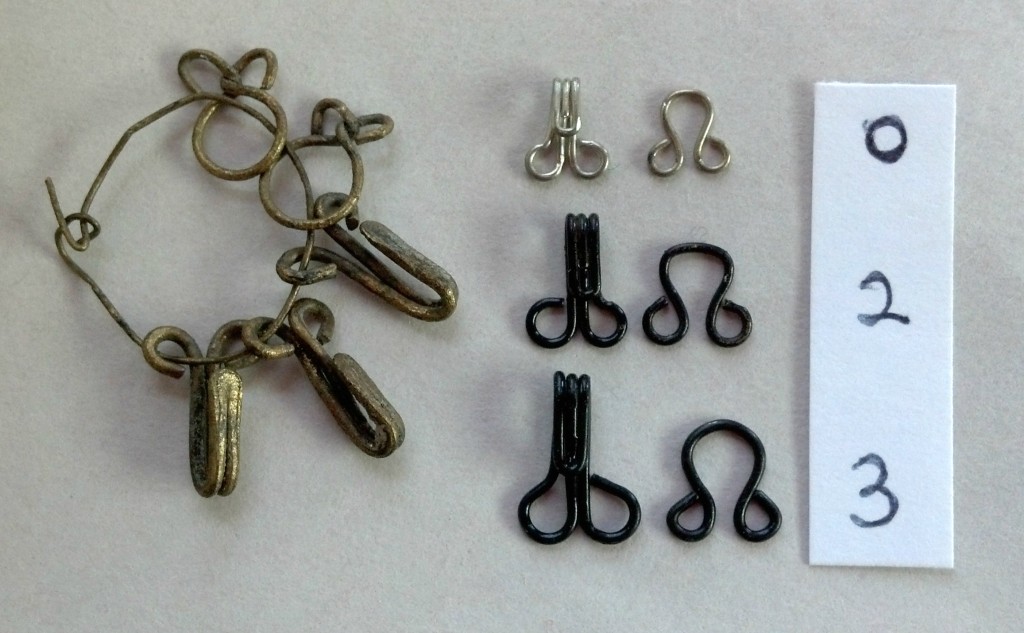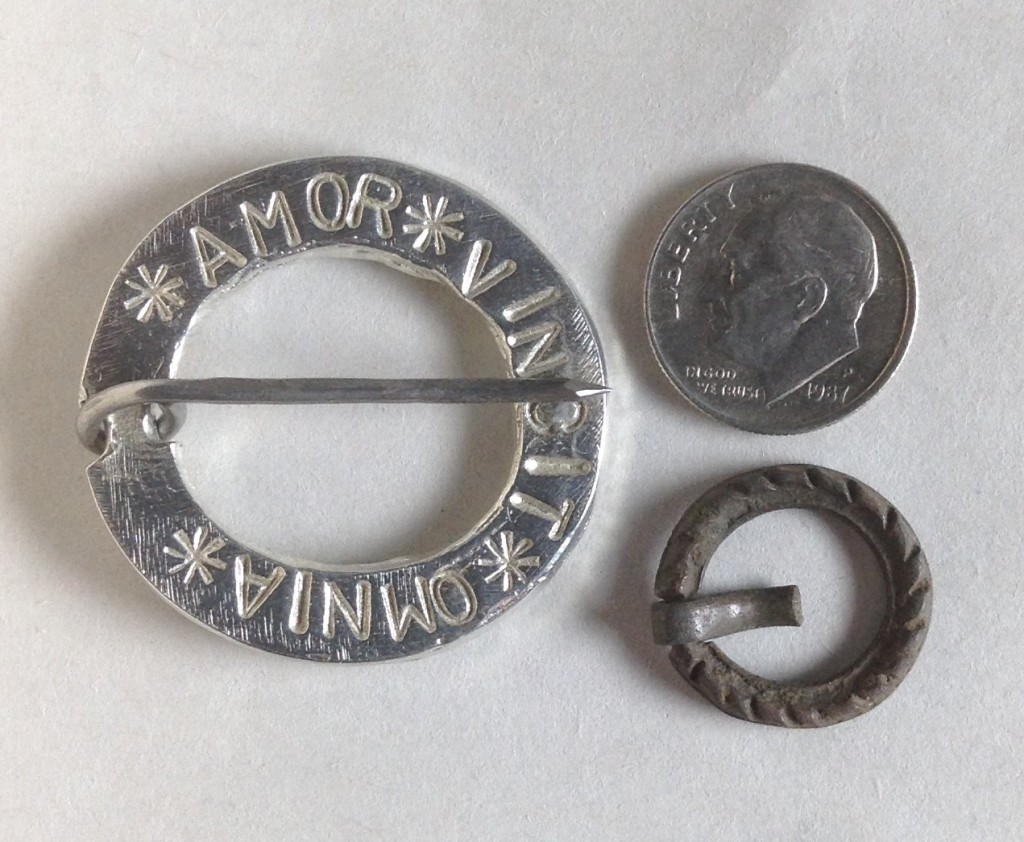So last time we discussed a little about dress pins and started looking at portraits that show pins in use as a dress accessory. One of the most important things that we have to look for when researching the use of pins is artists who do very precise and detailed portraits.
Rogier van der Weyden is definitely one of those artists. He painted a portrait known as Lady Wearing a Gauze Headdress (1445) that shows at least two pins being used for a complex headdress.
He also painted the Braque Family Triptych (1450). The right wing of the triptych shows Mary Magdalene, and it also clearly shows the use of a pin to hold a sleeve in place.
Another Rogier van der Weyden painting, also known as Portrait of a Lady (1455), shows several pins being used to anchor a fine veil to the top of a tall cap.
And this Portrait of a Lady by Rogier van der Weyden (1460) shows pins being used on both her headress to hold her veils in place and to anchor the sheer fabric of her neckline.
You may have noticed all of the paintings entitled “Portrait of a Lady” – all that means is that the name of the person in the painting has not been determined.
Ercole dé Roberti painted a portrait of Ginevra Bentivoglio (1480) that shows exactly one pin at the very top of her bun. You will definitely need to hit the “200%” button, but it is clearly there.
This portrait of Mary of Burgundy (1490), by Michael Pacher, shows a pin being used to attach a decorative pendant to her headdress.
Quentin Massy’s portrait, The Moneylender and His Wife (1514) shows a pin used to hold a veil in place under a hat.
Lucas Cranach the Younger painted a portrait of Katharina von Mecklenburg (1545), that shows a number of pendants or earrings hanging off the bottom of her hat. Unfortunately it is impossible to tell how these items are attached, but there are other portraits that show pins holding the pendants/earrings in place. My friends and I used to joke about the Italian women sending earrings to their cousins in Germany, but they didn’t have pierced ears, so they would just hang them on their hats. There is no way to know if this is true or not, but the lack of women in German portraits without earrings is notable.
A Portrait of Martha Thannstetter by Bernhard Strigel (1515) shows a pin being used to hold a wrapped veil.
And of course there are tons of portraits where we assume that there is a pin being used, but the artist has not painted them. Pieter Aertsen’s and Joachim Beuckelaer’s paintings of women working in the marketplace show several examples of what appears to be pins in use to hold on sleeves and partlets, but there are no actual pins showing in the paintings.
And then this post 1600’s painting by Louise Moillon shows two women in a marketplace. Both of them have pins holding their partlets in place.
We know that pins could also be used to pin the front plackets into women’s dresses. I could not find any portraits that show this, but records show that they were still doing this in Colonial America.
People used dress pins to close or decorate their clothing the same way that we would use safety pins, or velcro, or even a zipper.



